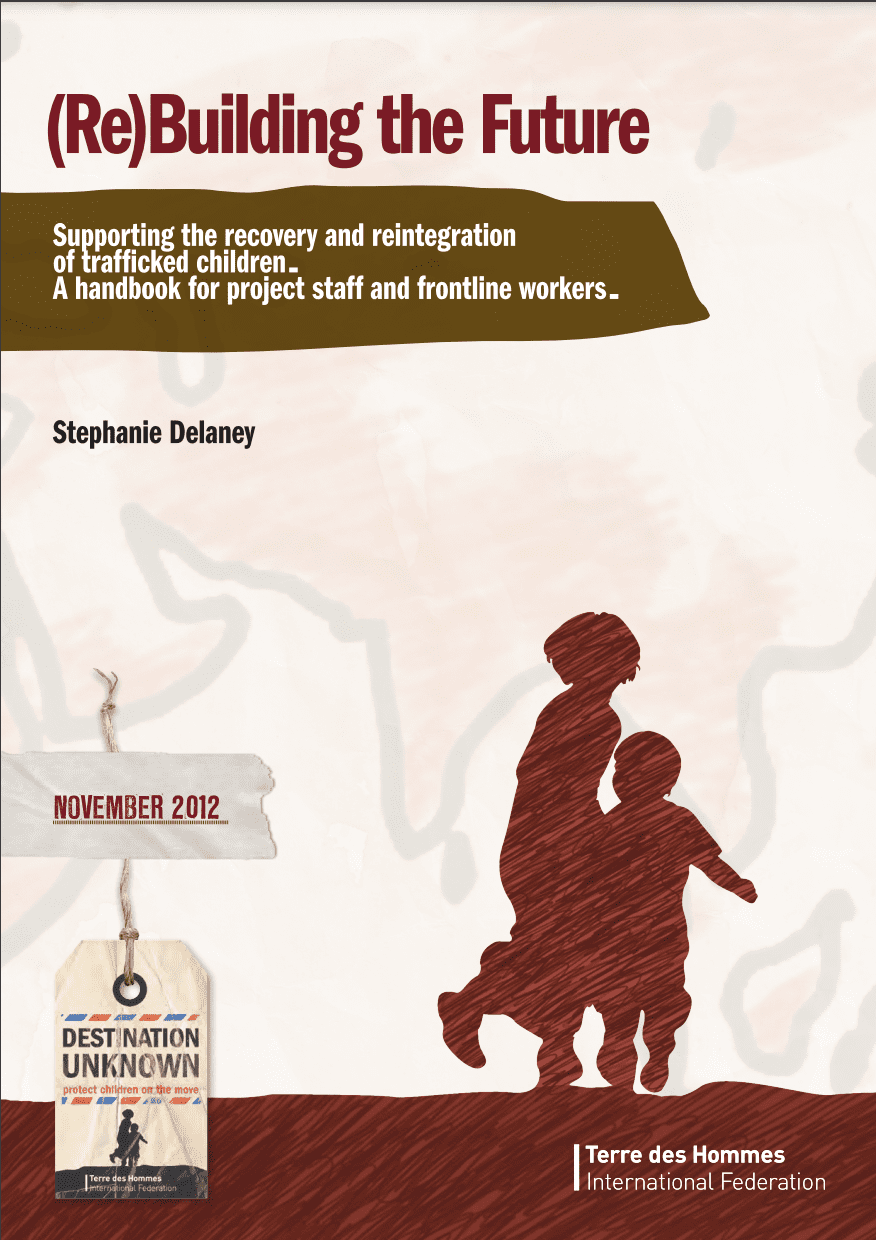
(Re) Building the Future: Supporting the recovery and reintegration of trafficked children
Introduction:
This handbook has been written for mainly for use in South and South East Asia. Given the differences both among countries and in the operation of various organisations, it is not possible to provide a complete guide with detailed instructions. to do so would be misleading.
Workers need to be aware of, and work within, the legal framework of their country with respect to the protection of children. This might include, for example, mandates about the particular role and responsibilities of the organisation they work for, or part of the professional code of conduct for certain occupations (such as social workers and psychologists).
Similarly, workers also need to be aware of any standards or indicators that have been developed, such as those relating to the establishment and operation of shelters. Where standards do not exist, projects might consider it useful to develop such, in order to guide and assure the quality of their services.
Purpose of the Handbook:
Primary purpose of this handbook is to expand on project workers’ understanding of how to help trafficked children in schemes supported by members of the Terre des Hommes International Federation (TDH) and their local partners. Ideally, the material will be useful more generally to other organisations or programmes for abused children. The handbook is not intended to be a training guide but instead should be considered as a tool for reinforcing training previously provided and to act as an introduction for newer workers. It can also be used to help project workers, and their managers, identify areas of further capacity building that may be needed.
The handbook seeks to explore the principles underpinning work with trafficked children and to examine the main processes involved. Consideration is also given to the dilemmas that may be encountered and issues that workers should keep in mind as they work with trafficked children.
How the Handbook was Developed:
The handbook was developed within the framework of a wider programme concerning Children on the Move, of which a number may be trafficked.
In addition to a review of existing literature, two workshops (one in Asia and one in South Asia) were conducted with TDH and its country partners to explore current practices. The outputs from these workshops, together with information from the literature review and supplementary information provided by the consultant, were compiled into a draft document. This document was then distributed for partners to review, and further inputs provided during a workshop with partners in Bangkok during early November 2012. The final version of the handbook was produced in November 2012.
Inevitably when workers have had training from a variety of sources and have many years of experience, good ideas are adopted and elaborated over time. Although we have tried to ensure that all material is correctly referenced, in some cases it has not been possible to identify the original source. If you believe that your work is not accurately acknowledged, please contact TDH, and we will be happy to make any necessary amendments in future revisions (email to childrenonthemove@terredeshommes.org).
Format of the Handbook
The handbook is divided into sections, beginning with a general discussion about the implications of trafficking for children and its impact on their lives. Each ensuing section covers a different aspect relating to the reintegration of trafficked children. This has been done as a way of systemically organising the material. It should be remembered that there is considerable overlap between the sections; each aspect affects the others and should not be considered in isolation.
Terre Des Hommes in Asia:
TDH has worked in Asia for many years, in particular focusing on programmes for trafficked children. TDH recognises that advocacy is a core element of its work in effecting change in children’s lives. Additionally, TDH considered it important that advocacy messages are based upon concrete experience from the field and thus assists numerous partner agencies to carry out direct child protection and child welfare programmes.
Read more here.
